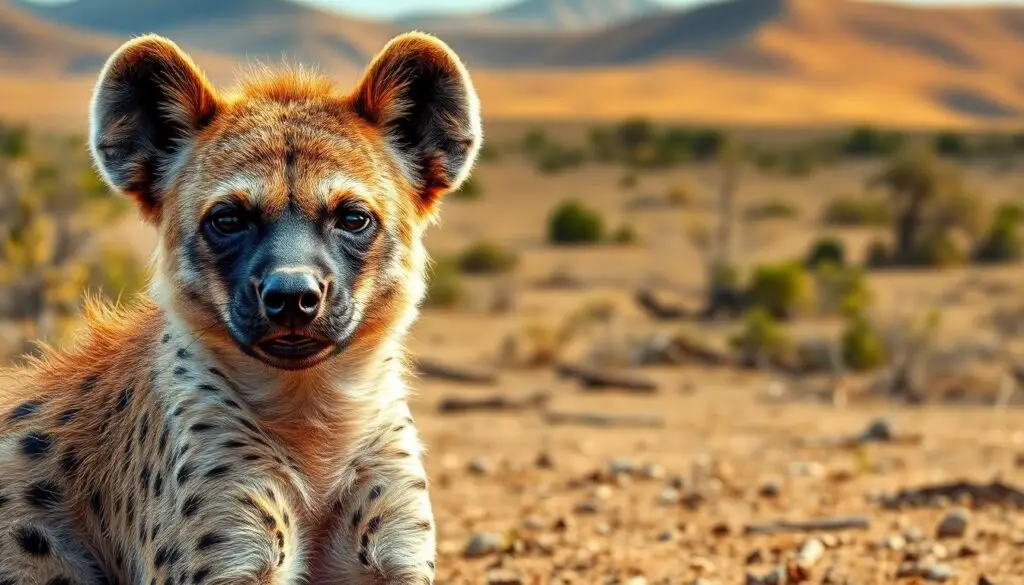Hyenas have prowled through human mythology and symbolism for centuries, often misunderstood and shrouded in mystique. These remarkable creatures embody a fascinating duality in symbolic meaning across different cultures—representing everything from cunning and survival to transformation and the shadow self.
We’ll explore how hyenas have been portrayed in various traditions, from ancient Egyptian mythology where they were associated with magic and divination to African folklore where they sometimes represent wisdom and sometimes trickery. You’ll discover why these intelligent predators have become such powerful symbols and what their representation might mean in your own spiritual journey.
The Cultural Significance of Hyena Symbolism
Hyena symbolism carries profound cultural significance that varies dramatically across different societies throughout history. Ancient cultures often incorporated hyenas into their religious and social narratives, using these complex animals to represent various human traits and cosmic forces.
In many African communities, hyenas occupy a dual position as symbols of both wisdom and cunning deception. The Harar people of Ethiopia maintain a unique relationship with hyenas, feeding them as part of religious ceremonies and viewing them as creatures capable of understanding human speech. Their ability to communicate with hyenas is considered a gift, establishing them as mediators between the human and animal realms.
Middle Eastern folklore portrays hyenas as shape-shifters with supernatural abilities, including mesmerizing humans and transforming into beautiful women to lure unsuspecting travelers. These tales reflect deep cultural anxieties about deception and the unknown, positioning hyenas as boundary-crossing entities that challenge the normal order of things.
Western interpretations of hyena symbolism typically skew negative, portraying these animals as symbols of cowardice, greed, and uncleanliness. This perspective gained momentum during colonial periods when European observers misinterpreted and devalued indigenous African relationships with hyenas, creating lasting negative stereotypes that persist in modern media representations.
Contemporary wildlife conservation efforts have begun reshaping cultural perceptions of hyenas by highlighting their ecological importance and complex social structures. Through educational initiatives, documentaries, and scientific research, these misunderstood creatures are gradually gaining recognition for their intelligence and crucial role in maintaining network health rather than being dismissed through outdated symbolic associations.
Hyena Symbolism in African Folklore

Hyenas embody complex dual symbolism throughout African traditions, representing both revered hunters and feared scavengers. Their contradictory nature makes them fascinating subjects in folklore across the continent, where they’re portrayed with multifaceted symbolic meanings.
The Hyena as Trickster and Shapeshifter
Hyenas frequently appear as clever tricksters in African folktales, using their wit to outmaneuver stronger predators and humans alike. This trickster archetype highlights their perceived cunning and adaptability, qualities that earned them both respect and suspicion in traditional societies. The most compelling transformation myths emerge from West Africa, where “Bultungin” (were-hyena) legends describe humans who shape-shift into hyenas at night to perform malevolent acts. These shapeshifting stories reflect deep-seated societal fears about hidden dangers and supernatural deception. Many communities view hyenas as liminal creatures existing between worlds—neither fully animal nor spirit—capable of traversing boundaries that humans cannot cross.
Sacred and Spiritual Connections
Hyenas hold important spiritual importance in various African belief systems, connecting mundane and supernatural realms. In Egyptian mythology, the goddess Mafdet sometimes appears with hyena-like features and represents justice and protection against venomous threats. Their association with cycles of regeneration positions them as powerful symbols of death and rebirth in certain African art forms and ritual contexts. Traditional healers and spiritual practitioners use hyena body parts in love magic and protective charms, underscoring their perceived supernatural influence. Their presence alongside shamans during ceremonial occasions further emphasizes their role as mediators between divine and mortal domains. This spiritual significance creates a fascinating dichotomy where hyenas simultaneously represent wisdom and deceit, life and death, highlighting their role as complex symbols of transformation throughout African spiritual traditions.
Hyena Imagery in Ancient Civilizations
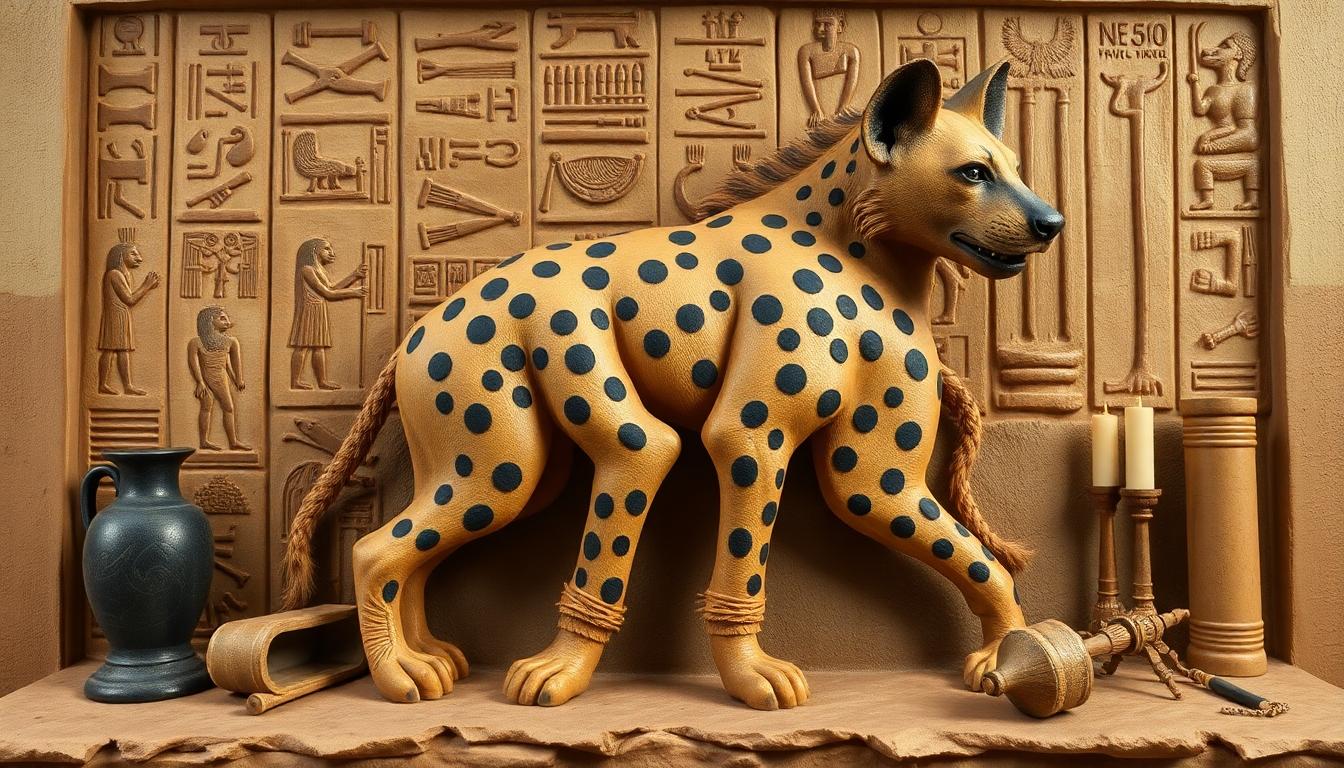
Hyenas have occupied a important place in human symbolism since prehistoric times. Upper Paleolithic carvings featuring spotted hyenas demonstrate their early symbolic importance, connecting them to concepts of survival and adaptability in primitive human societies.
Egyptian Mythology and Hyena Deities
Egyptian artistic representations included hyenas as symbols of liminality and transition between worlds. Though not prominently featured as deities compared to jackals or lions, hyenas appeared in Egyptian art as representations of danger or chaos. Their nocturnal habits and scavenging behaviors linked them to boundary spaces between the civilized industry and wilderness. Archaeological evidence suggests Egyptians recognized hyenas’ unique position in the natural order without elevating them to the status of major religious figures.
Middle Eastern Symbolism
Middle Eastern folklore consistently portrays hyenas as complex trickster figures and bearers of omens. Their androgynous biological traits and scavenging behaviors established them as symbols of moral ambiguity in many traditions. These cultural representations often served as cautionary tales against greed or deceit. Hyena parts were incorporated into love magic and protective rituals, highlighting widespread belief in their mystical properties. Their distinctive vocalizations, which encode social status within hyena clans, created parallels with human social hierarchies and communication patterns. This connection between hyena social structures and human communities reinforced their symbolic significance across various Middle Eastern cultural contexts.
Negative Portrayals in Western Culture
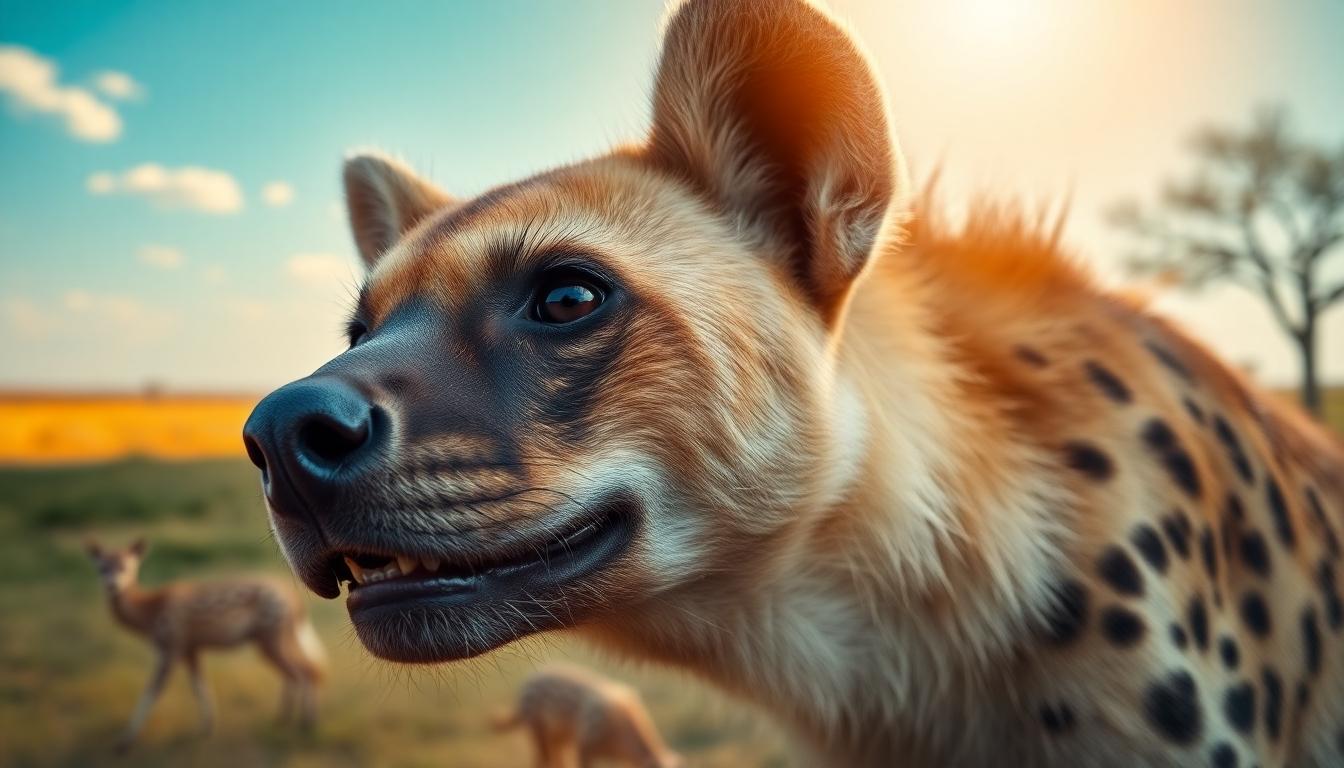
Western culture has historically viewed hyenas through a negative lens, characterizing them as ugly, cowardly scavengers. This unfavorable reputation stems from ancient texts and has persisted through centuries of literature, folklore, and modern media.
Colonial Influences on Hyena Perception
Colonial perspectives significantly reinforced negative stereotypes about hyenas. Western societies often portrayed these animals as off-putting or inferior due to cultural isolation and lack of understanding of their true nature. The distance created between Western observers and hyenas allowed pre-existing biases to flourish, with misconceptions rooted in folklore becoming accepted as fact. Colonial literature frequently characterized hyenas as unpleasant creatures, reinforcing these prejudices and contributing to their poor reputation that continues to impact conservation efforts today.
Modern Media Representations
Modern entertainment media has perpetuated unfavorable hyena stereotypes through villainous or comedic portrayals. Disney’s “The Lion King” stands as a prime example, depicting hyenas as foolish but dangerous accomplices to the main antagonist. These characterizations contrast sharply with scientific research that reveals hyenas’ remarkable intelligence and complex social structures. Recent zoological studies have begun shifting public perception by highlighting hyenas’ impressive problem-solving abilities and sophisticated clan dynamics. Contemporary interpretations now sometimes recognize hyenas as symbols of flexibility, resourcefulness, and community—qualities that accurately reflect their adaptability and cooperative hunting techniques in the wild.
Hyena Symbolism in Contemporary Art and Literature
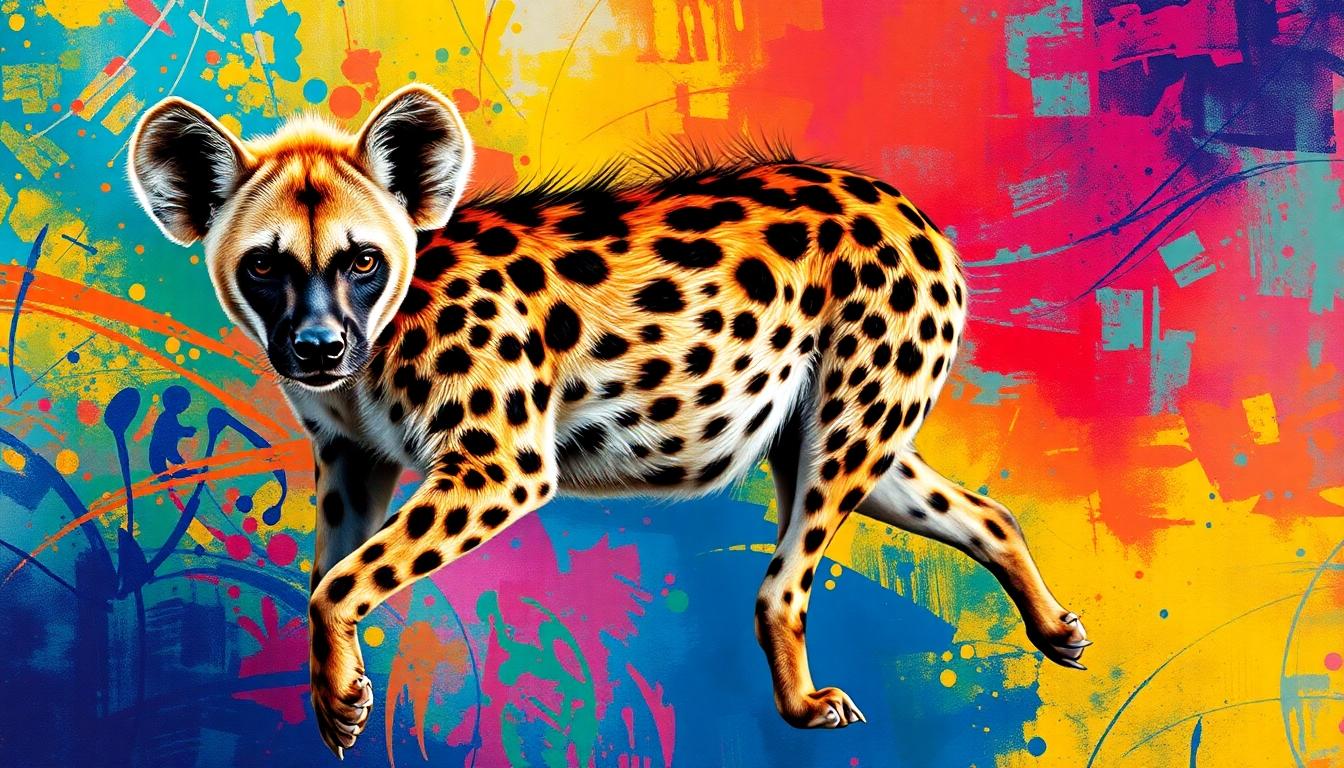
Contemporary artists and writers have embraced hyenas as complex subjects, challenging traditional negative stereotypes and exploring their multifaceted nature. In modern artistic representations, hyenas embody a fascinating duality that captivates audiences through various creative mediums.
Artistic Representations
Contemporary art features hyenas portrayed with themes of wild majesty and intelligence, drawing viewers into their industry through thoughtful compositions. Artists often emphasize the animal’s expressive features and social dynamics, moving beyond caricatures to reveal their true essence. The spotted hyena’s unique appearance serves as inspiration for creators seeking to explore themes of misunderstanding and recontextualization in their work. Many contemporary wildlife artists highlight the striking coat patterns and powerful physique of hyenas, celebrating their natural beauty rather than perpetuating negative stereotypes.
Literary Significance
Hyena symbolism appears less frequently in literature compared to other animals, yet their occasional inclusion often carries important symbolic weight. Their representation typically revolves around their scavenging nature and complex social behavior, serving as metaphors for resilience and adaptability. Though exact literary examples aren’t widely documented, hyenas occasionally function as powerful symbols in stories exploring themes of social hierarchy, survival, and transformation.
Modern Symbolic Meanings
Hyenas in contemporary contexts symbolize resourcefulness and creativity, demonstrating the ability to thrive in challenging environments. Their adaptability represents problem-solving skills and playful innovation—qualities increasingly valued in modern society. In creative works, hyenas often embody the concept of finding opportunity where others see only waste, reflecting their ecological role as efficient scavengers. Their complex social structures provide rich material for exploring themes of community dynamics and cooperation in both visual arts and written works.
Spiritual and Shamanic Interpretations
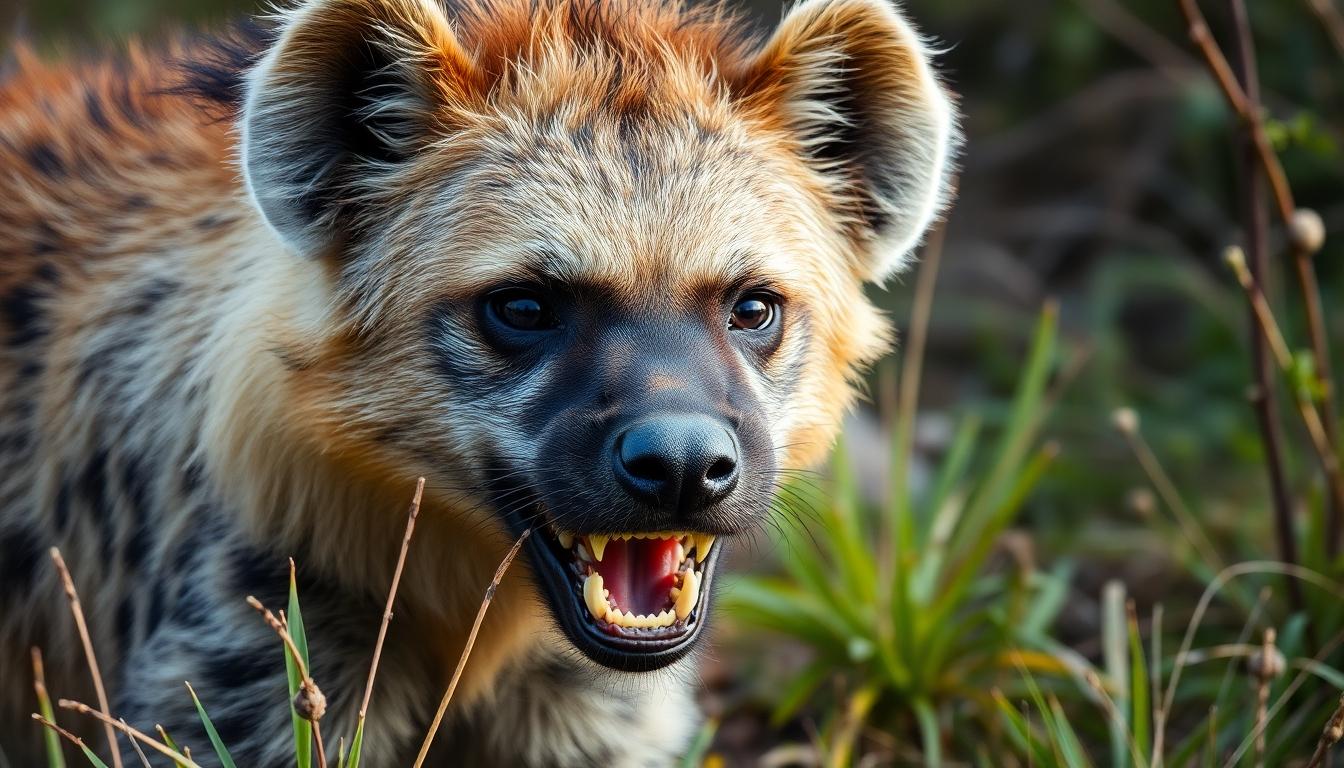
Hyenas hold important symbolic meaning in spiritual and shamanic traditions across various cultures. Their unique characteristics and behaviors have inspired spiritual interpretations that reflect deeper insights into human existence and our connection with the natural industry.
Hyenas as Spirit Animals
Hyenas embody powerful qualities as spirit animals, representing cunning, wit, and exceptional adaptability in challenging situations. They teach us to employ resourcefulness and opportunistic thinking when facing obstacles in life. The hyena spirit animal emphasizes the crucial importance of community and social bonds, reflecting the highly social nature of these animals in the wild. People connected to the hyena spirit often display remarkable resilience and flexibility, handling life’s changes with strategic thinking rather than brute force. The hyena’s spiritual essence encourages us to embrace our capacity for transformation and to find strength in community connections rather than isolation.
Dream Symbolism
Dreams featuring hyenas carry multiple symbolic meanings that provide insight into our subconscious mind. Encountering a hyena in dreams often represents the need for strategic thinking and adaptability when dealing with complex situations. These dream symbols sometimes serve as warning signs, alerting us to be vigilant about potentially deceptive or manipulative people or circumstances in our waking life. Hyenas appearing in dreams might also indicate the necessity to confront unresolved issues or face deep-seated fears that we’ve been avoiding. The social nature of hyenas in dreams frequently highlights the significance of nurturing strong relationships and finding one’s place within a community structure. Dream interpreters suggest paying attention to the hyena’s behavior in the dream—whether it appears threatening, playful, or observant—as each context reveals different aspects of our inner emotional industry.
Conclusion
The hyena stands as one of nature’s most misunderstood creatures yet holds profound symbolic significance across human history. From ancient Egyptian magic to African wisdom traditions these complex predators embody duality itself.
As we’ve discovered hyenas transcend simple categorization representing both life and death trickery and insight community and chaos. Their portrayal continues to evolve from colonial-era stereotypes toward a more nuanced appreciation of their ecological importance.
By understanding hyena symbolism we gain insight into how human societies process fears anxieties and ecological relationships. Whether as dream symbols spirit guides or literary metaphors hyenas invite us to embrace adaptability resilience and the power of community in our own lives.
Frequently Asked Questions
What do hyenas symbolize in different cultures?
Hyenas have complex symbolic meanings that vary widely across cultures. In African folklore, they represent both wisdom and trickery. Egyptian mythology links them to magic and divination, while Middle Eastern traditions view them as shape-shifters with supernatural abilities. Western interpretations often portray hyenas negatively as symbols of cowardice and greed, a perspective that developed during colonial times.
How do the Harar people of Ethiopia view hyenas?
The Harar people of Ethiopia have a unique relationship with hyenas, viewing them as important mediators between humans and animals. They see hyenas as creatures that bridge the gap between the human world and the animal kingdom, serving as spiritual intermediaries. This perspective demonstrates how some cultures have developed more nuanced and respectful relationships with these animals, contrary to negative Western stereotypes.
How has modern media affected hyena symbolism?
Modern media has largely perpetuated negative hyena stereotypes, with Disney’s “The Lion King” being a prime example where hyenas are portrayed as foolish and dangerous characters. These depictions reinforce unfavorable perceptions and rarely showcase hyenas’ intelligence, complex social structures, or ecological importance. However, recent wildlife documentaries have begun challenging these stereotypes with more accurate representations.
What role do hyenas play in African spiritual traditions?
In African spiritual traditions, hyenas serve as mediators between the mundane and supernatural realms. They’re associated with cycles of death and rebirth, representing regeneration. Many communities believe hyenas possess supernatural abilities and incorporate them into traditional healing practices. Their dual nature as both predators and scavengers positions them as powerful spiritual symbols bridging different worlds.
Why are hyenas often depicted as tricksters in folklore?
Hyenas frequently appear as trickster figures because of their perceived cunning and adaptability. Their ability to survive in challenging environments by outsmarting stronger predators translates into folklore where they use wit and cleverness to overcome obstacles. This characterization reflects their actual behavior in the wild, where they demonstrate remarkable problem-solving abilities and social intelligence to thrive in competitive ecosystems.
How are hyenas represented in contemporary art?
Contemporary artists portray hyenas with themes of wild majesty and intelligence, moving beyond stereotypes to celebrate their expressive features and complex social dynamics. Modern artistic interpretations emphasize hyenas’ resourcefulness and creativity, highlighting their adaptability in harsh environments. This artistic reframing helps challenge long-standing negative perceptions and presents a more nuanced understanding of these fascinating animals.
What do hyenas symbolize as spirit animals?
As spirit animals, hyenas represent cunning, wit, adaptability, and resourcefulness. They teach the importance of community and social bonds, as reflected in their tight-knit clan structures. People with hyena spirit animals are often encouraged to embrace transformation, develop resilience, and find creative solutions to challenges. They symbolize the ability to thrive in difficult circumstances through intelligence rather than brute force.
What might dreaming about hyenas signify?
Dreams featuring hyenas often symbolize strategic thinking and adaptability. They can serve as warnings about potential deception or unresolved issues in your life. The hyena’s behavior in your dream might reveal insights about your emotional state—laughing hyenas could indicate mockery or ridicule, while hunting hyenas might represent pursuit of goals. These dreams frequently highlight the importance of community relationships and social dynamics.
How have zoological studies changed perceptions of hyenas?
Recent zoological research has significantly shifted public perception of hyenas by highlighting their remarkable intelligence, complex social structures, and ecological importance. Studies have revealed that hyenas are highly intelligent problem-solvers with sophisticated communication systems and cooperative hunting techniques. This scientific understanding has helped reframe hyenas as symbols of flexibility, resourcefulness, and community rather than merely scavengers or cowardly animals.
What significance did hyenas have in ancient civilizations?
Hyenas appeared in Upper Paleolithic carvings, connecting them to themes of survival and adaptability. In Egyptian mythology, they symbolized liminality and chaos, representing the boundary between civilization and wilderness. Middle Eastern traditions portrayed them as trickster figures and omens. Their unique vocalizations and social structures drew parallels with human communities, reinforcing their symbolic importance across various ancient cultural contexts.

